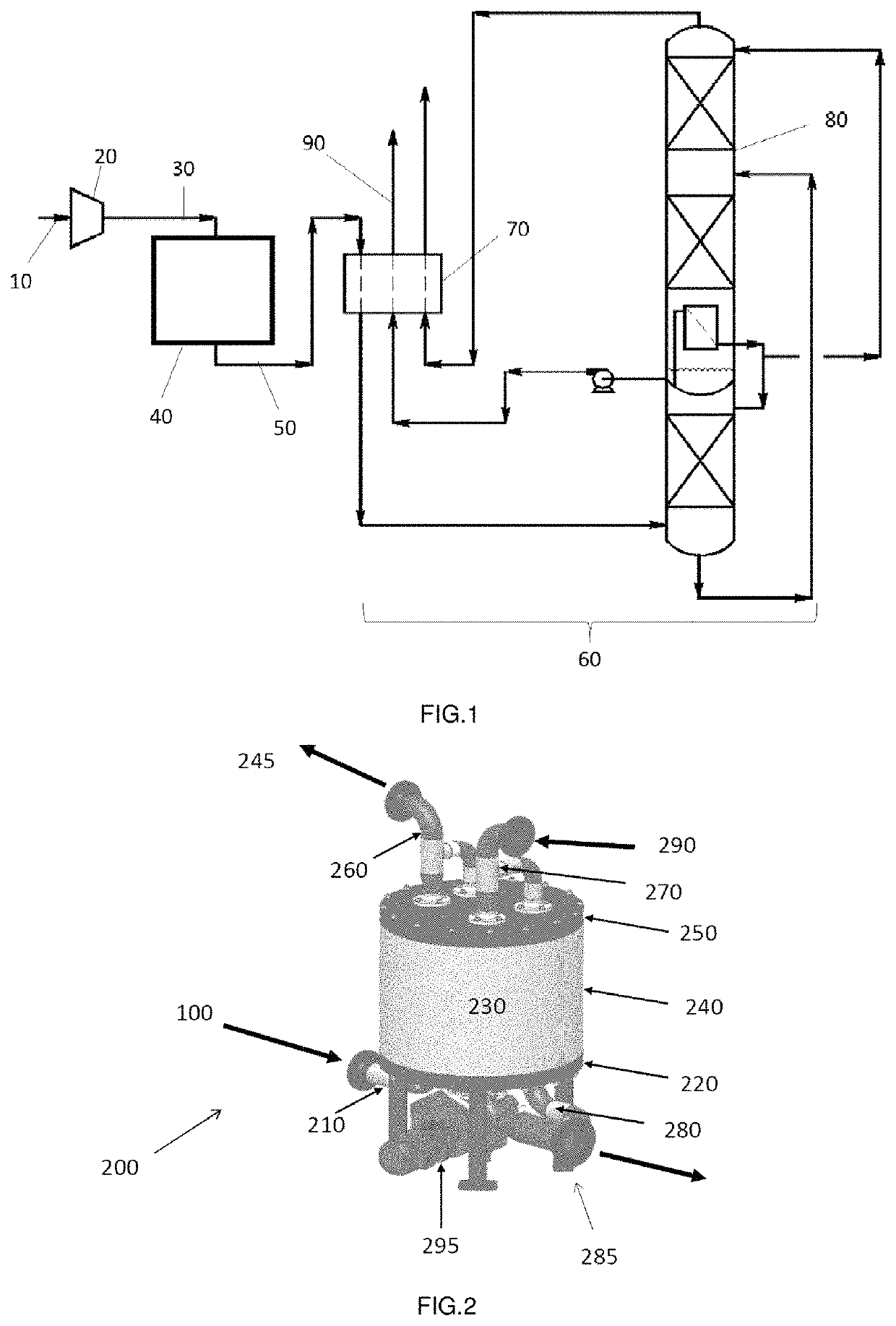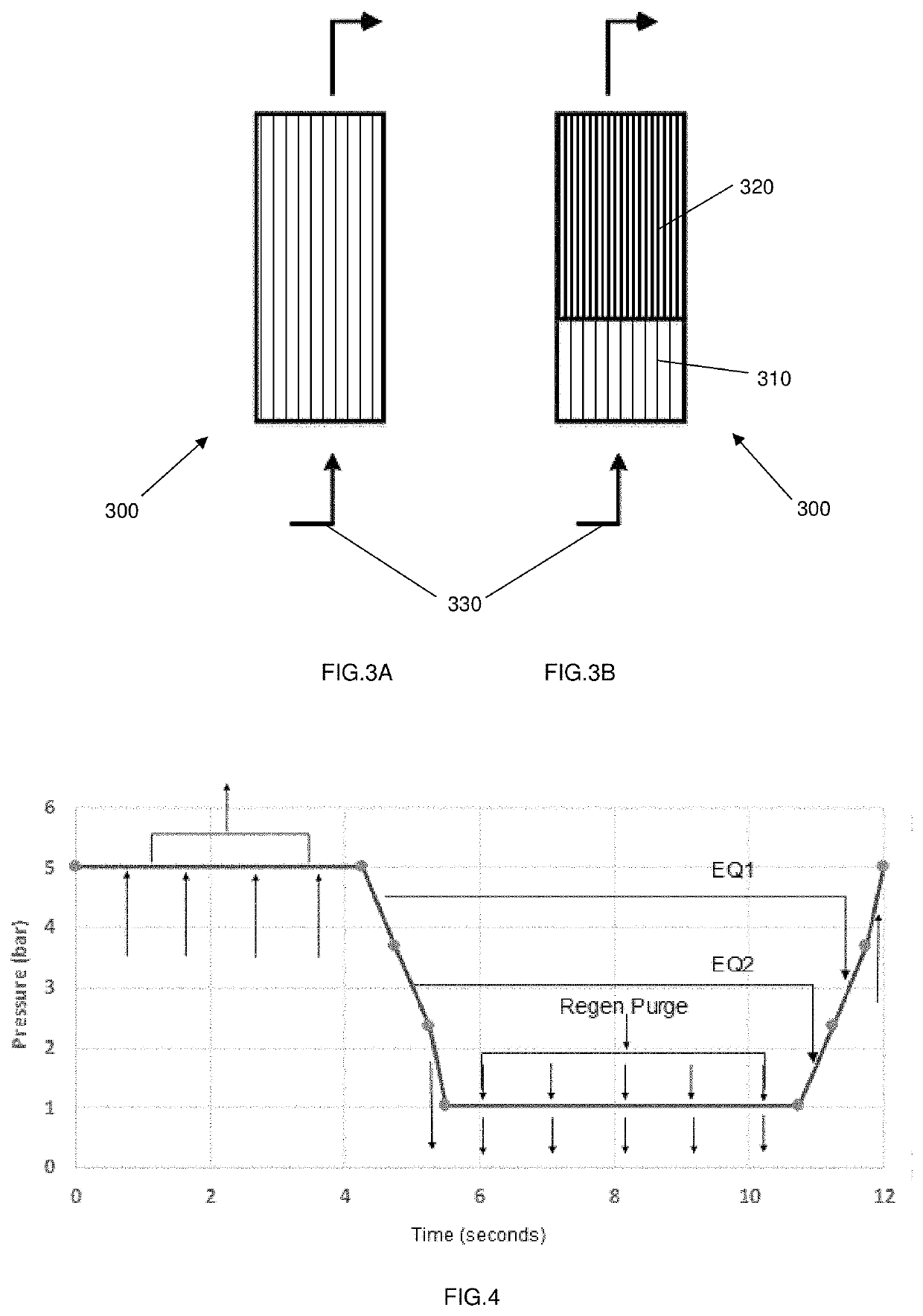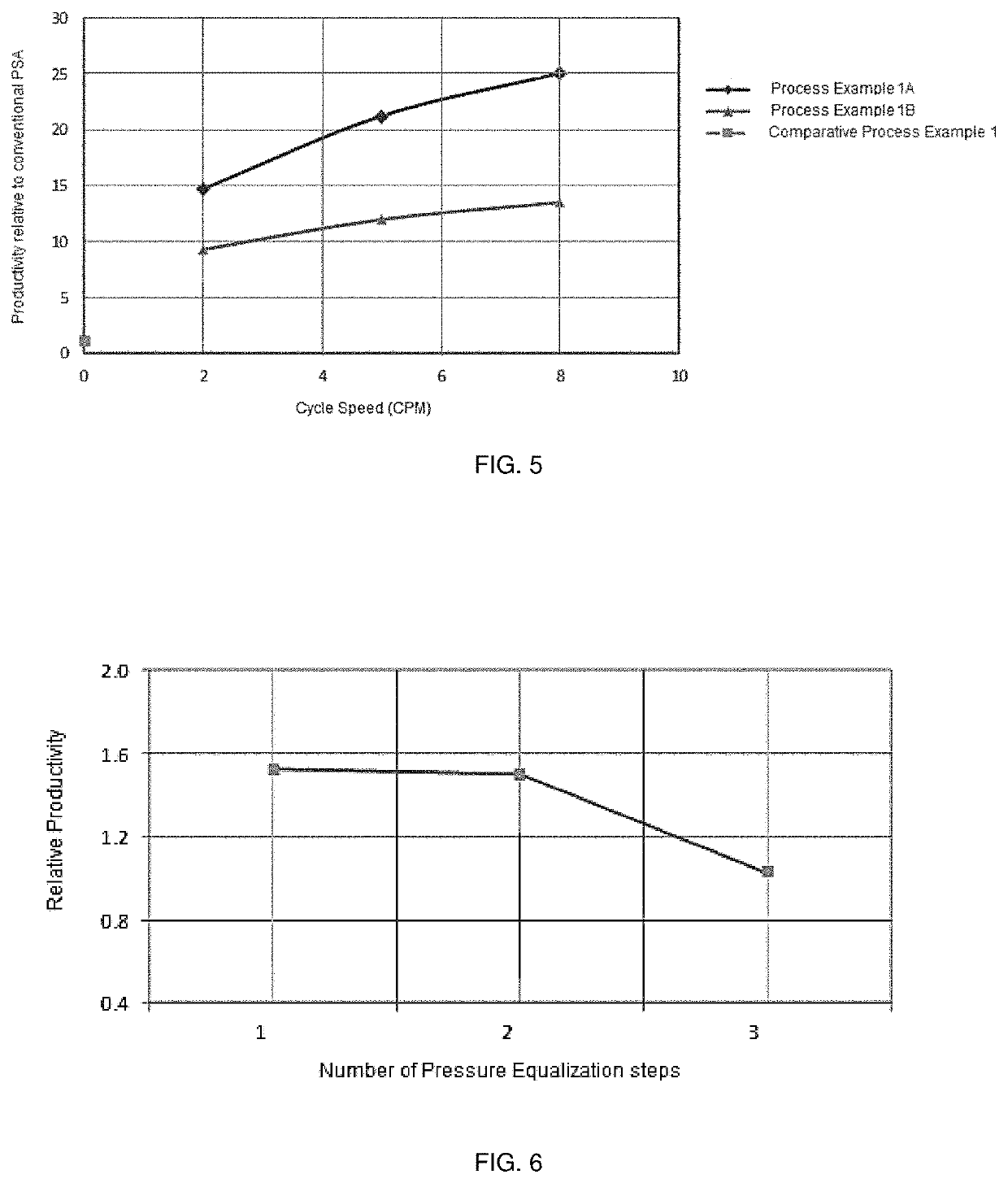Rapid cycle pressure swing adsorption process and adsorbent laminates for use therein
a technology of air purification process and adsorption laminate, which is applied in the direction of separation process, liquefaction, lighting and heating apparatus, etc., can solve the problems that no existing art employs structured laminate beds in air pre-purification process, and achieves rapid cycle time, reduced overall footprint, and improved mass transfer rate
- Summary
- Abstract
- Description
- Claims
- Application Information
AI Technical Summary
Benefits of technology
Problems solved by technology
Method used
Image
Examples
process example 2
[0138]Simulations were performed for an all alumina bed to evaluate different cycles at a constant cycle speed of 5 CPM. Three cycles differing in the number of top equalization steps were compared. It can be seen from the graph in FIG. 6 that the productivity obtained using a cycle with two top equalization steps is only slightly lower than that obtained using a cycle with one equalization step. In addition, the graph in FIG. 7 shows that switch loss is reduced by almost 1% when a cycle with two top equalization steps is used. Adding a 3rd equalization step can help minimize stability of process variation, and maintain a lower switch loss compared with the one-equalization step cycle. Overall it has been found that two or more equalization steps help the RCPSA process to achieve a low switch loss target of 2% or less, or at least less than 3%.
process examples 3-6
[0145]A RCPSA performance test was conducted to evaluate four different laminate bed configurations: all AA (short), AA (long), AA+13X two-layer bed, and AA+ Composite laminate two-layered bed. All laminate sheets / beds were of similar thickness and the flow channels were of similar height. Details of the bed configurations and results of the performance tests are summarized in Table 4.
[0146]All tests used atmospheric air compressed to required pressure. Feed pressures between 71-74 psig (4.9 to 5.1 bar) were tested. However, feed pressures in the range of 3-20 bar can be well suited for the RCPSA process. The feed was re-hydrated to >90% relative humidity before entering RCPSA beds. All test runs reached steady state with product CO2 concentration of ˜50 ppb.
[0147]It was found that the all AA bed configuration is capable of removing more than 90% of feed N2O, 100% of C2H2 and more than 97% of C2H4 in the feed (Process Example 3). The bed configuration with either a 13X bed layer (Pr...
process examples 7-9
[0151]A RCPSA performance test was conducted to evaluate hydrocarbon removal by composite laminate beds. All tests used atmospheric air compressed to required pressure. The feed was then re-hydrated to >90% relative humidity before entering the RCPSA beds. Hydrocarbons of acetylene and ethylene gases were injected and mixed with the feed air. All of the test runs reached steady state when the product CO2 and hydrocarbon concentrations were stabilized.
[0152]As can be seen from the data in Table 5, the composite bed completely removed hydrocarbons (C2+) at an average CO2 breakthrough concentration of 100 ppb or less.
[0153]
TABLE 5ProcessProcessExampleExample 7Example 8Process Example 9Bed ConfigurationLayer 1: 3″ AA (ComparativeLaminate 2c)Layer 2: 9″ Composite(60% AA / 40% 13X)(Composite Example 2b)Test Feed Pressure4.94.94.9(barg)Test Feed Temperature303030(° C.)Cycle Speed (CPM)555Air Productivity (VVH)152002270029600Purge to Air Ratio (%)505050Feed Air CO2440430510Concentration (ppm)...
PUM
| Property | Measurement | Unit |
|---|---|---|
| cycle time | aaaaa | aaaaa |
| cycle time | aaaaa | aaaaa |
| cycle time | aaaaa | aaaaa |
Abstract
Description
Claims
Application Information
 Login to View More
Login to View More - R&D
- Intellectual Property
- Life Sciences
- Materials
- Tech Scout
- Unparalleled Data Quality
- Higher Quality Content
- 60% Fewer Hallucinations
Browse by: Latest US Patents, China's latest patents, Technical Efficacy Thesaurus, Application Domain, Technology Topic, Popular Technical Reports.
© 2025 PatSnap. All rights reserved.Legal|Privacy policy|Modern Slavery Act Transparency Statement|Sitemap|About US| Contact US: help@patsnap.com



